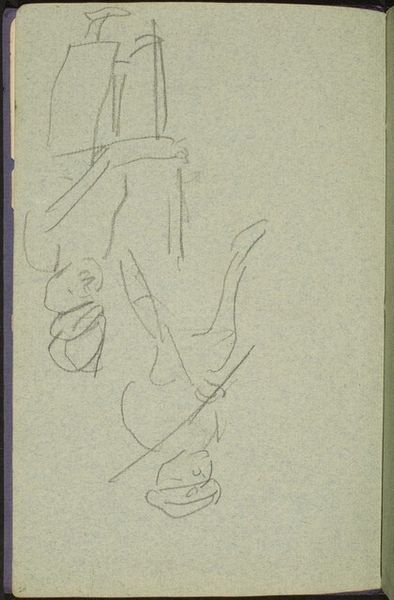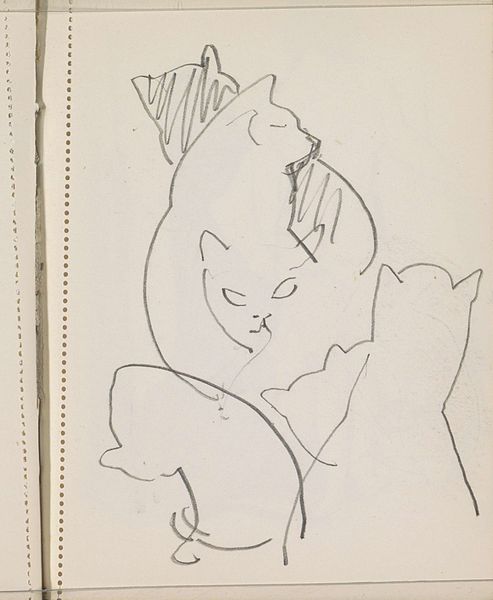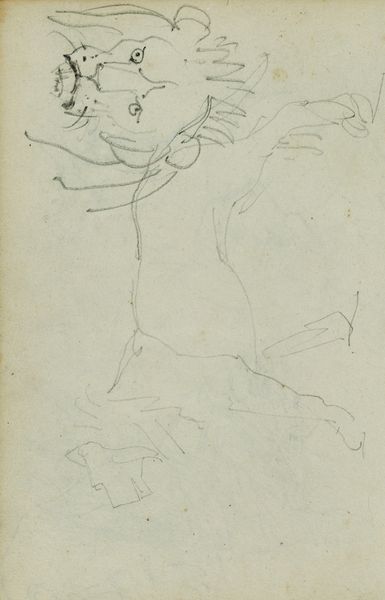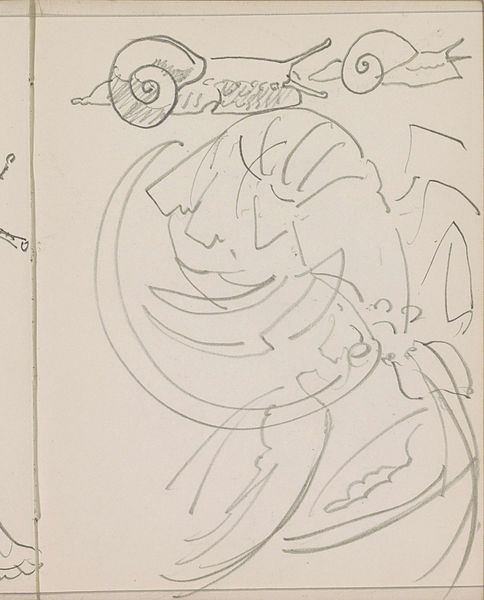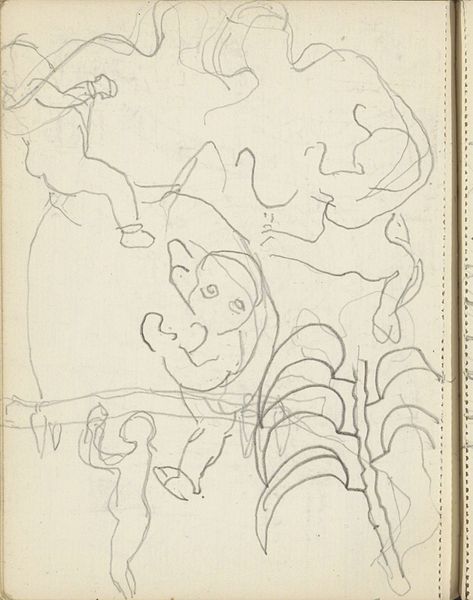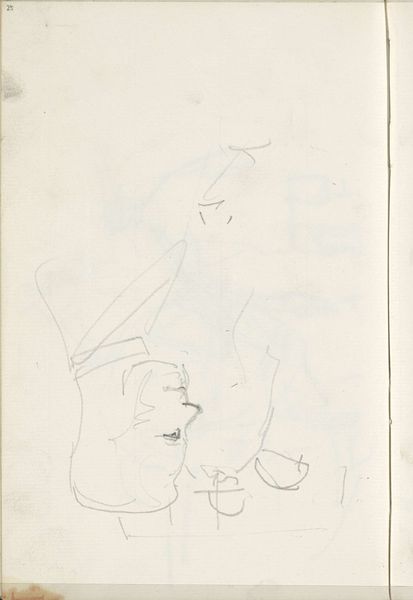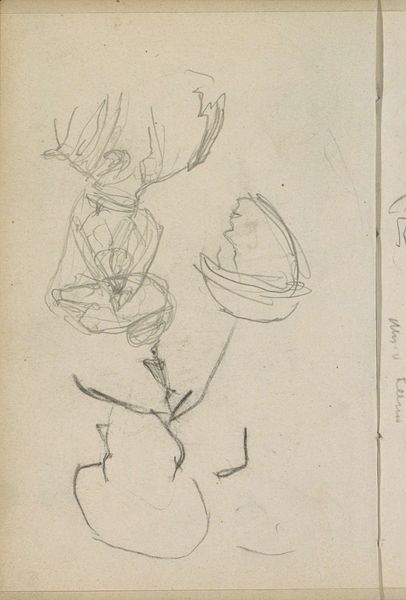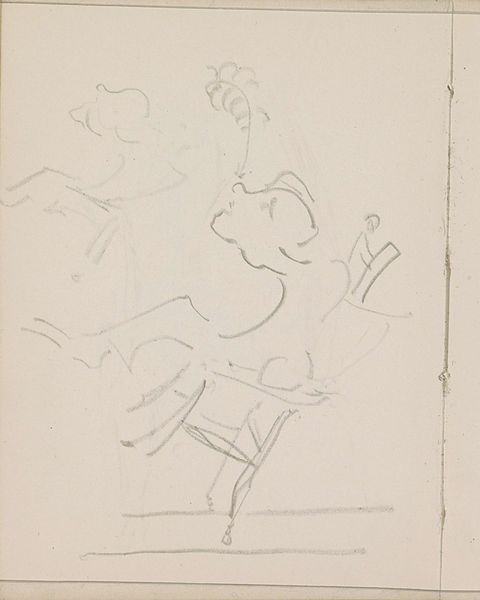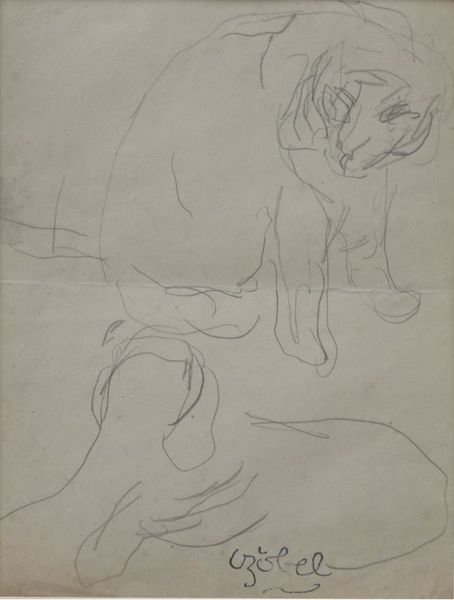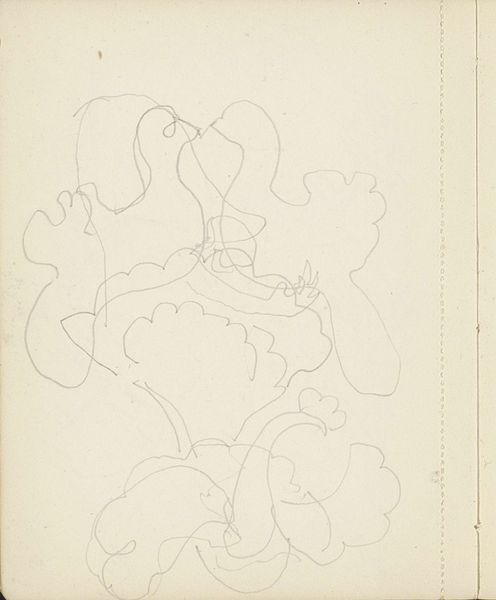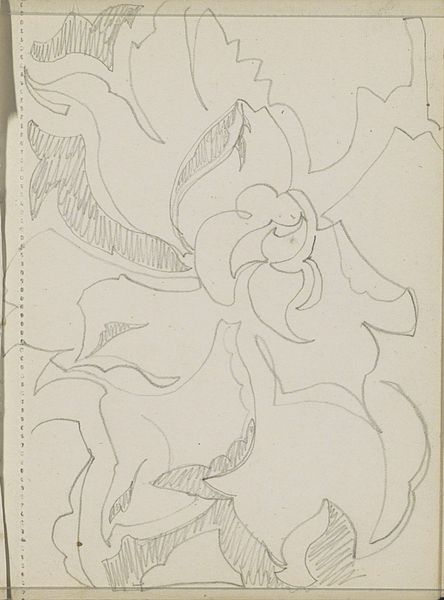
drawing, paper, pencil
#
drawing
#
comic strip sketch
#
imaginative character sketch
#
organic
#
blue ink drawing
#
flower
#
cartoon sketch
#
figuration
#
paper
#
personal sketchbook
#
idea generation sketch
#
ink drawing experimentation
#
pencil
#
naïve-art
#
sketchbook drawing
#
storyboard and sketchbook work
#
sketchbook art
Copyright: Rijks Museum: Open Domain
Editor: Here we have Reijer Stolk's "Hen met kuikens, een bloem, gekko en dieren," or "Hen with chicks, a flower, gecko, and animals," a drawing on paper from somewhere between 1916 and 1945. It looks like a page from a sketchbook, quite simple and raw. What compositional elements jump out at you? Curator: Immediately striking is the work’s flatness. The artist employs line—primarily contour—to delineate forms. Note how the absence of chiaroscuro flattens the "hen" and her brood. How do the shapes themselves strike you? Editor: Well, they're quite elementary, almost childlike. The lines are tentative, and there's a playful lack of perspective. I notice there's an inscription too, "omkijkend," and some other writing beneath it. What do you make of that? Curator: Indeed, that calligraphic inclusion provides an index to the artist's process—a trace of their thinking directly embedded in the composition. Furthermore, consider how the juxtaposition of animal, vegetable, and mineral—the hen, the flower, the gecko— generates visual interest by way of variety and juxtaposition. What unifies this diversity? Editor: I suppose the tentative line work is consistent across all the figures, making it feel unified despite the different subjects. Are you suggesting that the unifying principle here is the artistic process itself? Curator: Precisely. It foregrounds not a polished final product but a record of artistic exploration, made visible through the graphic elements. And the paper itself - the ground - plays a crucial role. Consider its inherent materiality: the tooth, the colour, its capacity for receiving marks. What effect does it create? Editor: Thinking about the drawing as a whole, it does emphasize the idea of art as a process rather than a fixed thing. It shows the artist thinking, trying things out. Curator: Precisely. And the drawing prompts a deeper reflection on artistic practice itself. The act of creation takes precedence over any representational outcome.
Comments
No comments
Be the first to comment and join the conversation on the ultimate creative platform.
